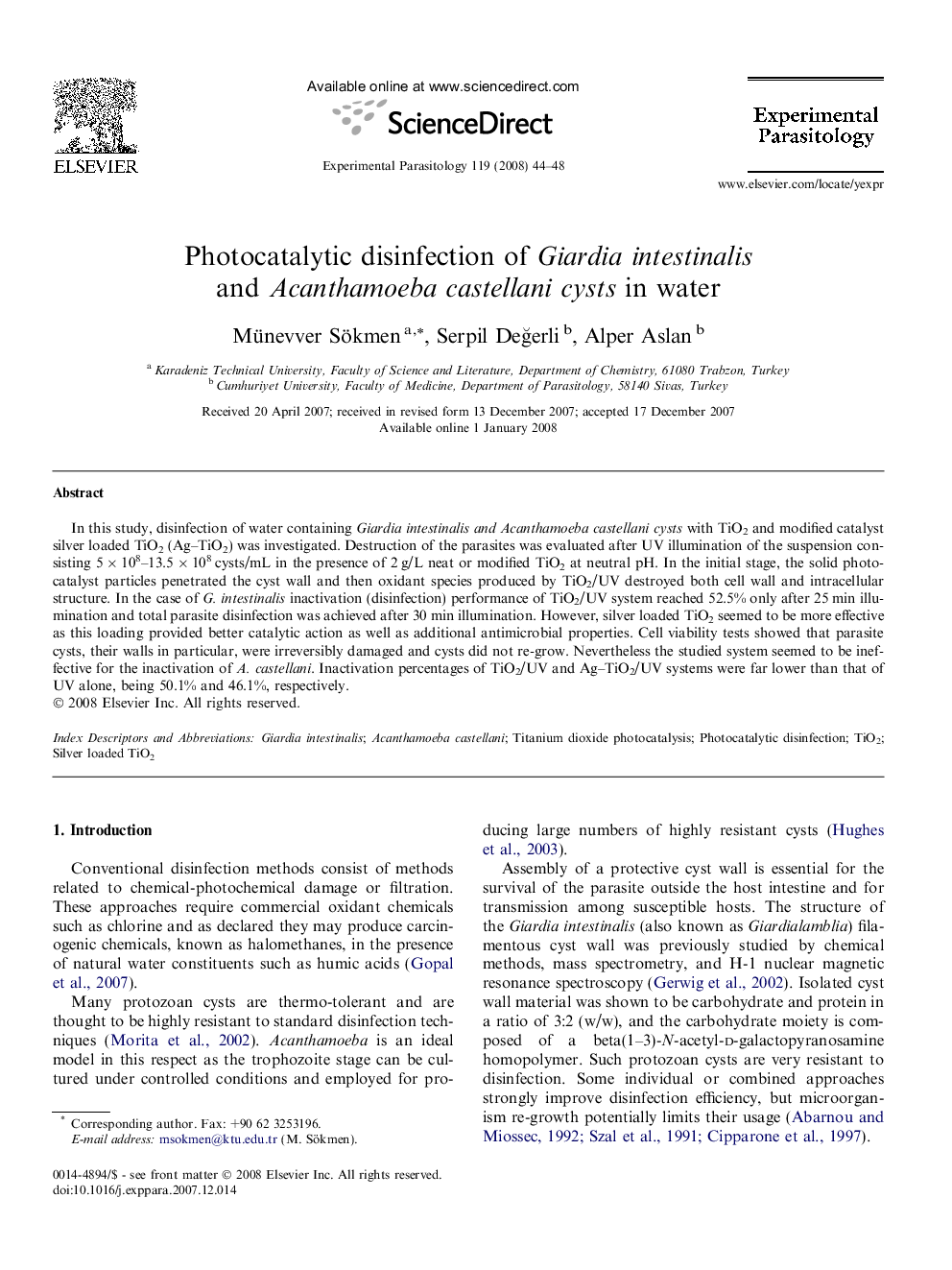| Article ID | Journal | Published Year | Pages | File Type |
|---|---|---|---|---|
| 6292222 | Experimental Parasitology | 2008 | 5 Pages |
In this study, disinfection of water containing Giardia intestinalis and Acanthamoeba castellani cysts with TiO2 and modified catalyst silver loaded TiO2 (Ag-TiO2) was investigated. Destruction of the parasites was evaluated after UV illumination of the suspension consisting 5Â ÃÂ 108-13.5Â ÃÂ 108Â cysts/mL in the presence of 2Â g/L neat or modified TiO2 at neutral pH. In the initial stage, the solid photocatalyst particles penetrated the cyst wall and then oxidant species produced by TiO2/UV destroyed both cell wall and intracellular structure. In the case of G. intestinalis inactivation (disinfection) performance of TiO2/UV system reached 52.5% only after 25Â min illumination and total parasite disinfection was achieved after 30Â min illumination. However, silver loaded TiO2 seemed to be more effective as this loading provided better catalytic action as well as additional antimicrobial properties. Cell viability tests showed that parasite cysts, their walls in particular, were irreversibly damaged and cysts did not re-grow. Nevertheless the studied system seemed to be ineffective for the inactivation of A. castellani. Inactivation percentages of TiO2/UV and Ag-TiO2/UV systems were far lower than that of UV alone, being 50.1% and 46.1%, respectively.
